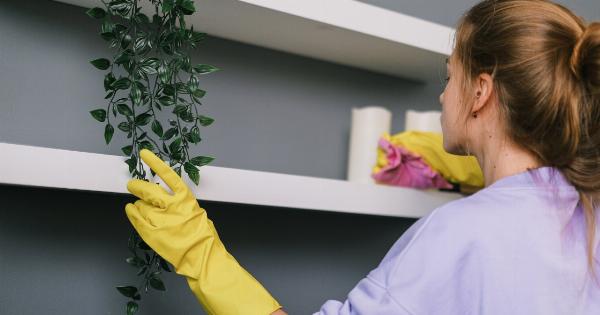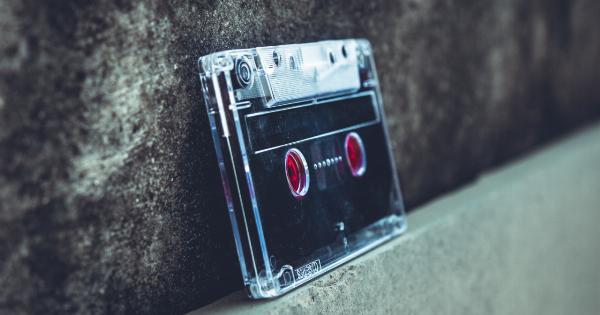As a parent, keeping your child healthy and safe is a top priority. One of the biggest threats to a child’s health is illness caused by germs. Germs are everywhere, and it’s almost impossible to avoid them completely.
However, there are certain sources of germs that are more dangerous than others. By being aware of these sources, you can take steps to reduce your child’s exposure and keep them healthy.
1. The Kitchen
The kitchen is one of the most common sources of germs. This is because it’s where food is prepared, and many types of bacteria thrive in moist, warm environments. Some of the most dangerous kitchen germs include:.
- E. coli
- Salmonella
- Listeria
To reduce your child’s exposure to kitchen germs, it’s important to clean all surfaces frequently, especially cutting boards and countertops. Use separate cutting boards for different types of food, such as meat, fruits, and vegetables.
Make sure to wash your hands and your child’s hands frequently, and always cook meat thoroughly.
2. Bathrooms
Bathrooms are another common source of germs, especially if they are not cleaned regularly. Some of the most dangerous bathroom germs include:.
- C. difficile
- Staphylococcus
- Methicillin-resistant Staphylococcus aureus (MRSA)
To reduce your child’s exposure to bathroom germs, it’s important to clean all surfaces frequently, especially the toilet and sink. Encourage your child to wash their hands frequently, and to avoid touching their face while in the bathroom.
You may also want to consider using a disinfectant spray or wipes to clean high-touch surfaces like door handles and light switches.
3. Toys
Toys can harbor a variety of germs, especially if they are frequently shared or if they are not cleaned regularly. Some of the most dangerous toy germs include:.
- Rotavirus
- Adenovirus
- Influenza
To reduce your child’s exposure to toy germs, it’s important to clean toys regularly, especially ones that are frequently shared. Wash plush toys in the washing machine or by hand, and wipe down hard toys with a disinfectant spray or wipes.
Don’t forget about toys that are used outside, which can harbor a variety of germs from the environment.
4. School or Daycare
Schools and daycares are a breeding ground for germs, especially during cold and flu season. Some of the most dangerous school or daycare germs include:.
- Norovirus
- Streptococcus
- Influenza
To reduce your child’s exposure to school or daycare germs, encourage them to wash their hands frequently and to avoid touching their face.
Consider packing a small bottle of hand sanitizer in their backpack, and remind them to use it before eating or after using the bathroom. If your child is sick, keep them home to avoid spreading illness to others.
5. Public Places
Public places like shopping malls, libraries, and movie theaters can harbor a variety of germs. Some of the most dangerous public place germs include:.
- Norovirus
- E. coli
- Influenza
To reduce your child’s exposure to public place germs, encourage them to wash their hands frequently and to avoid touching their face.
Carry hand sanitizer with you and use it frequently, especially after touching high-touch surfaces like door handles and escalator rails.
6. Pets
Pets can be a source of germs, especially if they are not properly cared for. Some of the most dangerous pet germs include:.
- Salmonella
- Campylobacter
- Ringworm
To reduce your child’s exposure to pet germs, make sure to wash your hands and your child’s hands after handling pets or pet-related items like food bowls and toys.
Keep pet areas clean, and make sure to take your pet to the vet regularly to ensure they are healthy.
7. Pools
Swimming pools can be a source of germs, especially if they are not properly maintained. Some of the most dangerous pool germs include:.
- Giardia
- Cryptosporidium
- E. coli
To reduce your child’s exposure to pool germs, make sure to only swim in properly maintained pools. Encourage your child to shower before and after swimming, and to avoid swallowing pool water.
8. Soil and Sand
Soil and sand can be a source of germs, especially if they are contaminated with animal feces or other substances. Some of the most dangerous soil and sand germs include:.
- E. coli
- Salmonella
- Parasites like hookworm and roundworm
To reduce your child’s exposure to soil and sand germs, make sure to wash your hands and your child’s hands after playing outside.
Encourage your child to avoid putting dirt or sand in their mouth, and to avoid playing in areas where animals may have defecated.
By being aware of the most dangerous sources of germs, you can take steps to reduce your child’s exposure and keep them healthy. Remember to encourage frequent hand washing, and to keep high-touch surfaces and areas clean and disinfected.
By taking these steps, you can help protect your child from illness caused by germs.





























